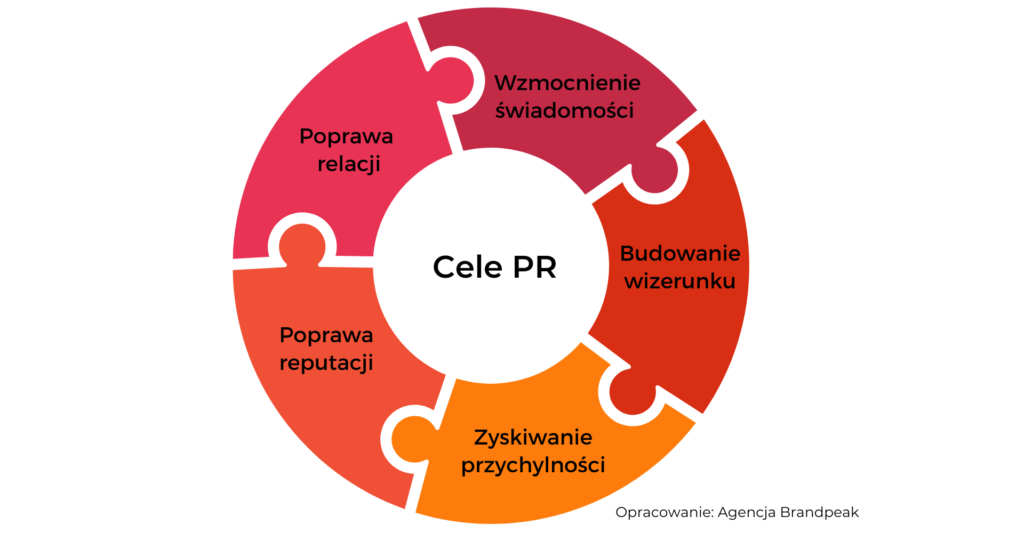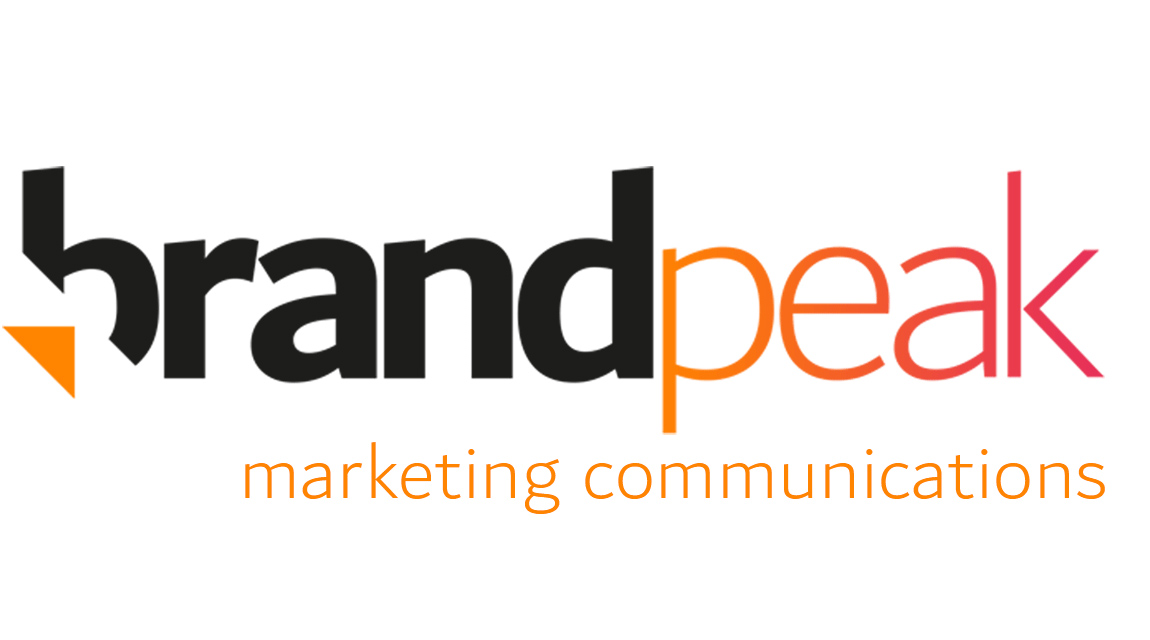What PR actually does, i.e. key public relations tools
- 25 December 2023
-
Agencja Brandpeak - social media, marketing internetowy i PR

You have certainly encountered the term public relations many times. It is a complex and ambiguous concept, but you need to know it… and understand its role. How to meet the assumptions and goals of public relations, and with what tools and activities can they be achieved? We have collected the most important issues in the text below. Enjoy reading!
What is public relations? Definition
What certainly proves the uniqueness of public relations is the very fact that… this concept is very broad and difficult to define. One of the pioneers of public relations research, Dr. Rex Harlow, identified nearly 500 attempts to define this term – impressive, right? Based on them, he developed a synthetic, extensive and even exhaustive definition:
Public relations is a characteristic management function that:
- helps establish and maintain reciprocal lines of communication, understanding, acceptance and cooperation between the organization and its public;
- includes problem and issue management;
- helps management stay informed and responsive to public opinion;
- defines and emphasizes management’s responsibility to serve the public interest;
- helps management stay current and effectively take advantage of changes by serving as an early warning system that helps anticipate trends;
- uses research and sound ethical communication techniques as its main public relations tools.
This is a comprehensive and very comprehensive explanation, right? Don’t worry – for the purposes of the text, we can reduce it to the much more popular, slightly more general, although still current and well reflecting the essence of PR. Public relations is the conscious, planned and long-term cultivation of relations with the environment, leading to acquiring the largest possible number of clients, supporters and supporters.

Public relations goals
Let’s focus on what exactly wisely planned public relations activities are supposed to lead to. How can a company gain the number of customers and supporters mentioned above? There are many ways to achieve this.
Public relations goals include:
- improving the overall reputation of the company (we wrote about the company’s reputation, image and identity here).
- the company’s exposure to the public and presence in public space;
- strengthening awareness and positive brand image among current customers;
- improving relationships with these customers;
- the company’s presence in the minds of potential customers;
- strengthening the reputation of the organization in the industry to which it belongs;
- gaining favor and support of both public opinion and other groups of company stakeholders – authorities, business environment, non-governmental organizations, media, etc.
PR can also be used to encourage society to change its thinking about a specific phenomenon or inspire action on a specific issue.
All the above-mentioned public relations goals can be reduced to three general points:
- building relationships with the client and the organization’s environment
- building brand awareness
- building trust in the brand and a positive image by assuming the position of an expert.

Działania public relations
Let’s move on to public relations tools and activities that can support the organization in achieving the above-mentioned goals and building a good company image and maintaining good relations with the environment.
Key public relations tools
Media relations
Media relations is a very important public relations tool. The idea of media relations activities is very clear. It involves building and maintaining good relationships with the media, which will make them associate a given brand positively, be more willing to publish so-called mentions about it and generally present it in a positive light in media messages.
Public relations activities, such as media relations, are also particularly valuable when an organization is particularly interested in building trust in the brand and positioning itself as an expert. The media will always look more favorably at an entrepreneur who is able to talk as willingly about his company and products as about the current market situation or the problems and challenges faced by the industry he represents.
The so-called opinion leader has a greater chance of being recognized by recipients than companies that do not position themselves as experts. Providing such expert comments to the media can therefore increase trust and support building a positive brand image among a wide range of stakeholders.
What else do media relations bring, apart from the favor of journalists and editorial staff? It’s obvious: the ability to reach target groups and potential customers that are interesting to the organization. The largest, high-reaching media, read, listened to and received by hundreds of thousands or millions of recipients, can reach a much wider group than, for example, a newsletter or a company profile on social media.
Media relations tools
There are plenty of media relations tools that can be used in communicating with the media. These include press conferences and briefings, running a virtual press office, sending press releases and the above-mentioned expert comments, attempts to individually arrange interviews in the media and even creative mailings sent to specific journalists or editorial offices.
Consistent visual identification
A less obvious example of a PR tool than media relations is… visual identification. Less obvious only in theory – because it is the absolute basis when it comes to creating the company’s image on the market. A consistent visual system is one of the most important elements of a company’s identity!
The visual identification of an organization includes the selection of a specific graphic design (fonts, fonts, logo, colors) with which the company is to be associated or the so-called logo and brand books. It might seem that these are not matters of significant importance. But nothing could be further from the truth!
A well-thought-out, wisely planned and consistent visual identification of the company is a very important element that builds a positive image of the company among customers, partners and employees, strengthening positive beliefs about the company itself and its offer.
Communication audit
Public relations activities can also be expressed through a so-called communication audit. This is a multi-level and multi-channel analysis that involves summarizing the organization’s current communication both inside and outside the company.
On the one hand, a public relations audit aims to check whether the information flow within the company is efficient, fast and effective, but on the other – what the standard of communication of a given company with its customers looks like via various channels.
Events
By events as public relations activities, we mean both the organization and participation in various fairs, conferences, exhibitions and other industry events. Participating or organizing events gives the company a chance to have direct contact with the company’s stakeholders (customers, partners or even competitors), the opportunity to come into contact with its offer, get to know the company itself and the people who create it, and thus – acquire new, valuable business contacts. Participation in events builds and strengthens authenticity, credibility and trust.
e-PR
In the modern world of public relations, PR conducted online provides great opportunities to build and consolidate a positive brand image. Within the scope of the so-called e-PR includes, among others, running social media, a website or a company blog. Social media (from Facebook, Instagram, through TikTok to LinkedIn), a website or a blog are not only for sales and do not support marketing-related goals!
These are important public relations tools that help maintain good relationships with the environment and stakeholders.
Crisis management
Crisis management is part of those public relations activities that no company would like to undertake in the so-called practical conditions. This is, after all, a situation in which the company’s image and reputation are put to the test and requires decisive, well-thought-out actions aimed at extinguishing the crisis, minimizing losses as quickly as possible, as well as taking corrective actions that may compensate for the losses incurred.
Contrary to appearances, crisis management is not only about how to act when a crisis occurs, but… it largely focuses on how to counteract such situations and how to be prepared for them. Prevention is absolutely crucial in this case!
Therefore, crisis management means – in addition to immediate response in the face of a threat -, among others, practicing response patterns, training employees, monitoring mentions of the company, examining possible risks and threats, and regularly performing the above-mentioned communication audits.
Internal communication
Maintaining a good image of the company in the eyes of the company’s stakeholders (current and potential customers, business partners, investors, offices, media and other institutions) is very important. However, this list is missing one of the necessary target groups – the organization’s employees. When planning PR activities, you cannot ignore internal communication.
A positive image in the eyes of employees is as important as the quality of relationships, e.g. with our business partners. How to maintain it? Of course – clearly, honestly and regularly communicating with him about what is happening in a given company. This is really important!
The employer can boast about the successes achieved by the organization (for example, a record financial result or acquiring a key customer), draw attention to the outstanding achievements or initiatives of its employees, but also ask employees for their opinion on a specific aspect of the organization’s activities, for example through employee surveys.
Standard internal communication tools may be, for example, an intranet (an internal network, inaccessible to other users, through which the company publishes news and communicates with employees), a company newsletter or printed publications – brochures, magazines, company “newsletters”.
Employer branding
Employer branding is a concept that borders on public relations and human resources management. Very often it is dealt with by people with experience in the areas of PR and HR. Employer branding means a number of activities aimed at building a positive image of the employer both in the eyes of its employees and potential candidates. The idea behind this is simple.
A company that maintains the image of a good employer makes it easier for employees to identify with it, want to stay there and develop further, which prevents job turnover. On the other hand, an employer with a strong, distinctive brand will attract more applicants, which automatically increases the chance of selecting particularly talented employees from among the candidates.
Employer branding activities can use public relations tools in the area of both external and internal communication, because they concern stakeholder groups both outside and inside the company. An employer branding tool may be, for example, a special “Career” tab on the company’s website, social media of this organization, but also the company’s participation in fairs, organizing the so-called open days in the company, newsletters for employees, special employee benefits or even… a properly designed recruitment process. All this can strengthen the company’s image in the eyes of both current and potential employees.
Content marketing
Wait, but… how so? Do content marketing and PR have anything in common? Of course, and this is by no means a controversial thesis. We can even guarantee that if we were to prepare an article describing public relations tools supporting content marketing, we would include PR activities in it. There is nothing strange about this!
Content marketing (which we wrote about in more detail here) and Public Relations only seem to be distant activities. They have a lot in common and have many similar goals to achieve. Both of these areas strive to build trust in the brand, create its positive image among recipients and gain commitment and interest around the brand and its products or services.
Both of these areas can complement each other! Content marketing is based on creating high-quality content tailored to the needs of recipients. PR, on the other hand, builds interest, which guarantees such content a wide reach. Content marketing – by offering high-class content – can additionally strengthen customer trust in the company, emphasize its expertise and evoke positive associations with it.
PR tools – choose yourself
The PR activities mentioned in this text are only a part – although those mentioned in the text should be considered the most important, most effective and most willingly used. There are more and different opportunities to build a positive company image, maintain the best possible relations with the environment and reach a wider audience.
Want to learn more? Contact us.
Tell us about the challenges you face and your most pressing needs. We will help you develop an appropriate communication strategy. We will prepare a proposal of activities and select public relations tools that can support your company in achieving its chosen goal.
Zobacz, co jeszcze u nas słychać
Contact us
We will tailor actions to your needs and demonstrate how effective marketing and planned communication impact brand perception, image, and business sales. Feel free to ask what specific steps we can take for you.

Brandpeak
Biurowiec Rent Poland
ul. Zbąszyńska 4, 91-342 Łódź, Poland
Brandpeak — social media, internet marketing and public relations agency
Brandpeak is an agency specializing in social media, internet marketing, and public relations. We emphasize a unique blend of experience and knowledge. Our specialists meticulously plan and successfully execute campaigns and projects in internet marketing, digital PR, and social media. We utilize various online marketing tools, such as content marketing, influencer marketing, performance marketing, PPC, and email marketing.
Our services also include social media management and advertising. We excel in managing social media platforms, including Facebook, Instagram, and LinkedIn, which our satisfied clients can attest to! Through our efforts, we aim to build brand awareness, support the creation of strong brands, shape and maintain a positive image, and uphold a favorable reputation.
We achieve this through PR campaigns, analysis, building and nurturing media relationships, and managing press offices for our clients. We don’t fit neatly into a single category like a PR agency, social media agency, advertising agency, or creative agency. We prefer to think of ourselves as a comprehensive marketing agency that tailors marketing tools based on the specific goals we aim to achieve: improving brand image, increasing brand awareness, boosting sales, reaching new customers, and more. We understand the importance of these goals and how they contribute to business growth.
This holistic approach makes us the best marketing agency serving clients in Warsaw, Łódź, Poznań, Gdańsk, Kraków, Katowice, and Wrocław. Social media agency. PR agency. Marketing agency. Visit brandpeak.pl/en for more information.





